In the contemporary industrial landscape, wear-resistant ceramic pipes play a vital role in ensuring the durability and efficiency of pipeline systems. These specialized pipes are designed to withstand the rigors of various industrial applications, providing excellent resistance to wear and tear. This comprehensive guide explores the different types of wear-resistant ceramic pipes, their manufacturing processes, materials, and their respective advantages and disadvantages.
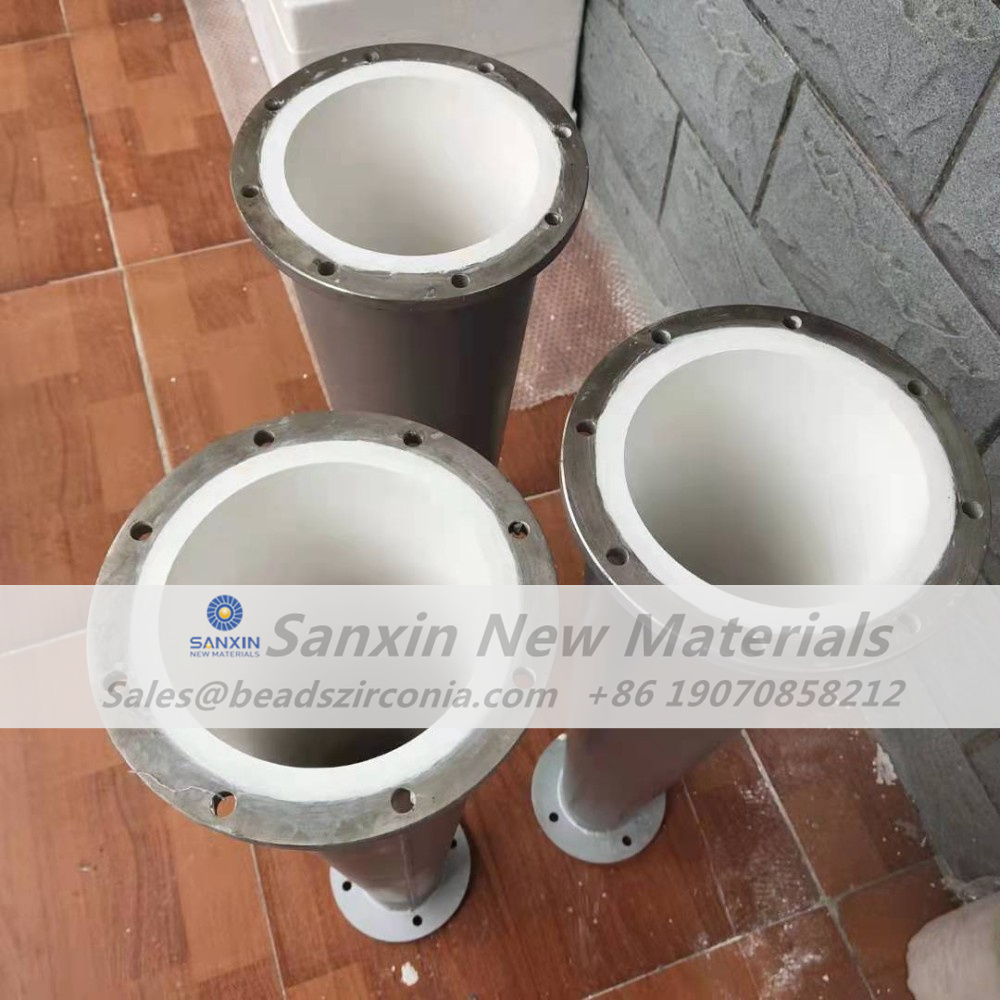
In industries such as mining, chemical processing, and power generation, pipelines are often subjected to abrasive materials, high velocities, and extreme conditions. This environment leads to significant wear, which can cause premature failure of standard pipes. As a solution, wear-resistant ceramic pipes have emerged as an effective means of extending the lifespan of pipelines, reducing downtime, and minimizing maintenance costs.
Wear-resistant ceramic pipes are specialized pipes lined with ceramic materials engineered to resist abrasion, corrosion, and impact. These pipes are typically used in environments where traditional piping materials fail to provide adequate protection against wear. The ceramic lining serves as a barrier that enhances the pipe's overall durability and operational efficiency.
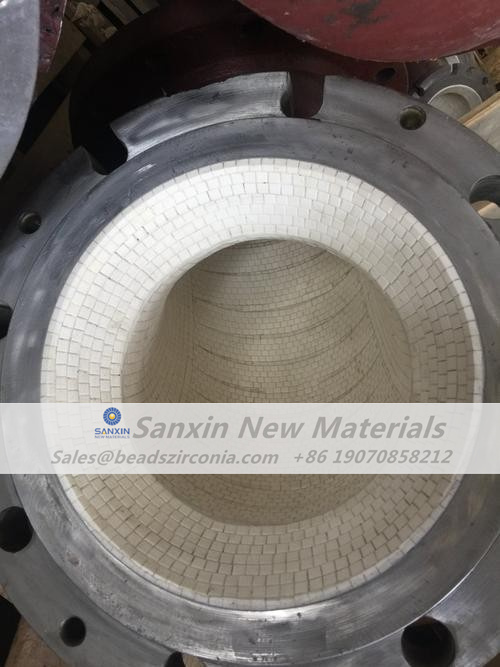
Wear-resistant ceramic pipes can be classified based on the method used to apply the ceramic lining. Each method has its own unique advantages and drawbacks, impacting the performance and application of the pipes.
Self-spacing wear-resistant ceramic pipes are produced through a technique known as centrifugally casting. In this process, a mixture of ceramic materials is subjected to high temperatures and rapidly spun in a mold. This method allows for the creation of a uniform ceramic layer, resulting in a smooth interior surface.
Cost-Effective Production: The centrifugally cast process is straightforward, reducing manufacturing costs.
Efficiency in Long-Distance Transport: Ideal for transporting powders over long distances due to the smooth interior, which minimizes friction.
Inconsistent Quality: The absence of a pressing and sintering phase can lead to variations in the quality of the ceramic lining.
Limited Applications: Generally suited for straight pipes; the uneven distribution of centrifugal force may limit its effectiveness in complex configurations.
Patch-type ceramic pipes involve the application of pre-fired ceramic tiles to the inner surface of the pipes. This is achieved using specialized ceramic adhesives that bond the tiles securely to the pipe.
Simple Installation: The installation process is relatively straightforward, enabling quick assembly and replacement.
Lower Overall Costs: The materials used and the ease of installation contribute to lower costs compared to other methods.
Variability in Adhesive Quality: The effectiveness of the bond depends heavily on the quality of the adhesive used.
Temperature Sensitivity: Many organic adhesives can lose effectiveness at temperatures exceeding 300°C, making these pipes unsuitable for high-heat applications.
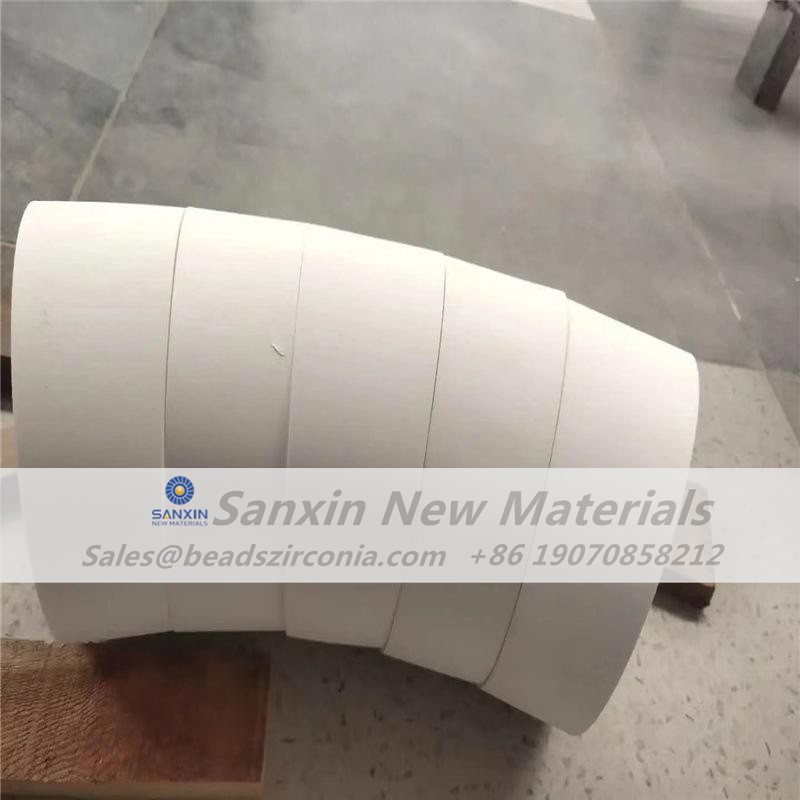
Screw-welded wear-resistant ceramic pipes incorporate a design where small holes are drilled into the ceramic tiles. These tiles are then affixed to the inner walls of the pipes using screws.
Excellent Temperature Resistance: These pipes can withstand high temperatures, making them suitable for challenging environments.
Strong Bonding: The mechanical fastening provides a robust connection between the ceramic tiles and the pipe.
Complex Installation Process: Installation requires careful alignment and may involve additional steps to ensure the screws are properly secured.
Cost Implications: The need for protective ceramic caps for screws adds to the overall cost.
Dove-tail groove pipes utilize a mechanical locking mechanism, where dove-tail guides are used to secure ceramic tiles within the pipe. This self-locking feature ensures a stable attachment of the tiles.
High-Temperature Performance: The dove-tail design provides strong resistance to high temperatures, enhancing durability.
Stable Mechanical Fit: The mechanical locking prevents tile displacement, ensuring consistent performance.
Intricate Installation: The installation process can be complex, requiring precise alignment and specialized tools.
Increased Costs: The advanced design and materials contribute to higher manufacturing costs.
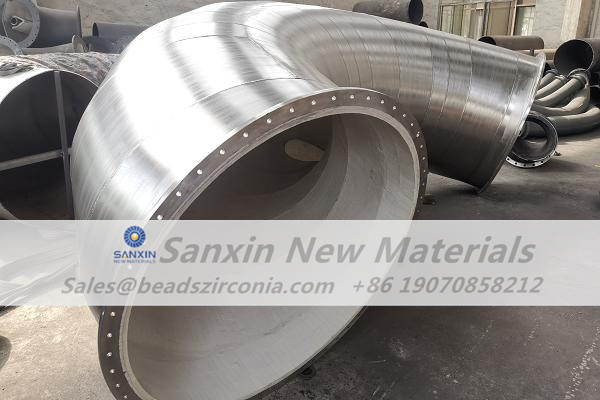
Ceramic ring-lined pipes are designed with ceramic rings that measure approximately 200-300mm in length. These rings are inserted into the pipe, minimizing the number of joints compared to traditional patch-type methods.
Reduced Risk of Material Accumulation: Fewer joints result in lower chances of clogging or material buildup.
Enhanced Durability: The continuous ceramic lining provides superior wear resistance compared to traditional methods.
Higher Initial Investment: The cost of manufacturing ceramic rings and the overall complexity can lead to higher initial expenses.
Integral-formed ceramic pipes are manufactured using unique sintering techniques that create a seamless, monolithic structure. These pipes can reach lengths of 2-3 meters without joints, enhancing their performance.
Seamless Design: The absence of joints improves sealing and insulation, making them ideal for demanding applications.
Superior Performance: The smooth construction enhances flow characteristics and reduces maintenance needs.
Increased Processing Difficulty: The advanced manufacturing process requires specialized equipment and expertise, leading to higher costs.
The performance and suitability of wear-resistant ceramic pipes can also be classified based on the ceramic materials used in their construction. The two most common materials are alumina ceramics and zirconia-alumina composite ceramics (ZTA).
Alumina ceramic pipes are renowned for their affordability, high hardness, and excellent wear resistance. They are often used in applications where cost efficiency is a priority.
Cost-Effective: Generally less expensive than other ceramic materials.
High Hardness: Provides significant wear resistance, making it suitable for various industrial applications.
Brittleness: Alumina ceramics are prone to cracking and can suffer from low impact resistance.
Limited Toughness: Their brittle nature makes them unsuitable for high-impact applications.
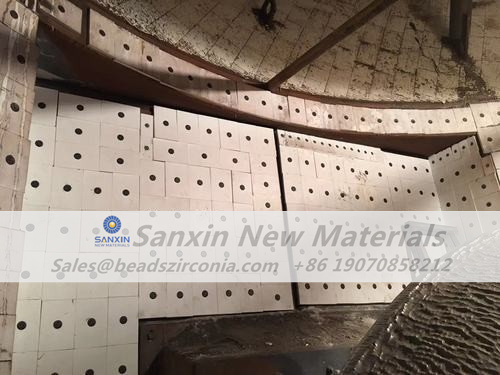
ZTA ceramics combine the properties of zirconia and alumina, resulting in a material with high toughness and excellent wear and impact resistance.
Enhanced Toughness: The composite nature of ZTA ceramics provides superior resistance to fracture and impact.
Versatile Applications: Suitable for high-stress environments where traditional ceramics may fail.
Higher Costs: ZTA ceramics are typically more expensive than alumina ceramics, which may limit their use in cost-sensitive applications.
In addition to alumina and ZTA ceramics, wear-resistant ceramic pipes can also be manufactured using materials like silicon carbide (SiC). These materials are often customized to meet specific operational requirements.
Silicon carbide ceramics offer outstanding hardness and thermal stability, making them suitable for extreme environments. They are commonly used in applications involving abrasive materials and high temperatures.
Advantages:
Exceptional Wear Resistance: Silicon carbide is one of the hardest materials available, providing excellent protection against wear.
Thermal Stability: Can withstand extreme temperatures without losing structural integrity.
Disadvantages:
Cost: Higher production costs compared to traditional ceramic materials.
Brittleness: Similar to alumina ceramics, silicon carbide can be brittle and prone to fracture under high impact.
Wear-resistant ceramic pipes can also be classified based on the materials used for the outer pipe, which can enhance the overall performance and versatility of the piping system. Common outer materials include steel, alloy, polypropylene (PP), rubber, and glass.
Steel and alloy pipes serve as structural supports for ceramic linings, providing strength and durability. The combination of ceramic and metal enhances the overall performance of the piping system.
Strength and Durability: Steel and alloy pipes are robust, providing excellent structural integrity.
Compatibility with Ceramics: The combination allows for effective wear protection while maintaining strength.
Corrosion Risk: Steel and alloy pipes may be susceptible to corrosion, which could compromise the overall system if not properly treated.
Weight: Steel pipes can be heavy, making installation and handling more challenging.
Polypropylene pipes are lightweight and resistant to corrosion. They can be effectively paired with ceramic linings for added wear resistance in various applications.
Lightweight: Easier to handle and install compared to metal pipes.
Corrosion Resistant: PP does not corrode, making it suitable for certain chemical applications.
Limited Heat Resistance: PP has lower temperature tolerance compared to metal pipes, which can restrict its use in high-temperature applications.
Less Structural Integrity: Not as strong as steel or alloy pipes, which may affect the overall durability of the system.
Rubber pipes provide flexibility and can accommodate bending, making them suitable for specific applications where movement is required. The ceramic lining enhances wear resistance, prolonging the life of the rubber pipes.
Flexibility: Rubber pipes can bend and adapt to various installation scenarios.
Enhanced Durability: The ceramic lining protects against wear, preserving the integrity of the rubber structure.
Limited Wear Resistance: While the ceramic lining improves durability, rubber itself is not as wear-resistant as metal or ceramic materials.
Temperature Limitations: Rubber may not withstand high temperatures, limiting its application scope.
Glass pipes, often utilized in applications requiring visibility, such as sight tubes, can be combined with ceramic linings for enhanced protection.
Transparency: Glass allows for easy monitoring of material flow within the pipes.
Chemical Resistance: Glass is inert and resistant to many chemicals, making it suitable for various applications.
Fragility: Glass pipes can be prone to breakage under impact or stress.
Limited Structural Support: Glass lacks the structural strength of metal pipes, which may restrict its use in certain applications.
Wear-resistant ceramic pipes are employed across various industries due to their unique properties. Their applications are broad, ranging from transporting abrasive materials to being integral components in specialized equipment.
In the mining sector, wear-resistant ceramic pipes are essential for transporting abrasive materials such as ores, slurries, and tailings. Their durability and resistance to wear help to minimize downtime and maintenance costs.
In chemical processing plants, wear-resistant ceramic pipes are utilized to transport corrosive substances and abrasive materials. Their chemical resistance and durability ensure the integrity of the piping system, reducing the risk of leaks and failures.
Wear-resistant ceramic pipes are increasingly used in power generation, particularly in coal-fired and gas-fired plants. They transport ash, slurries, and other abrasive materials, providing durability and reliability in demanding environments.
In the food and beverage industry, ceramic pipes are used for transporting various products, including slurries and powders. The inert nature of ceramics ensures that the pipes do not contaminate the products being transported, making them suitable for hygienic applications.
The pharmaceutical industry also benefits from wear-resistant ceramic pipes, as they can handle abrasive materials and maintain the integrity of sensitive products. Their chemical resistance and easy cleaning properties make them ideal for pharmaceutical applications.
In construction, wear-resistant ceramic pipes are used in applications such as drainage and sewage systems. Their resistance to abrasion and corrosion enhances the lifespan of these systems, reducing maintenance requirements.
When selecting wear-resistant ceramic pipes for a specific application, several factors should be considered to ensure optimal performance and longevity.
Understanding the operating conditions, including temperature, pressure, and the type of materials being transported, is crucial in selecting the appropriate pipe type. Each application may have unique requirements that influence the choice of ceramic lining and outer pipe material.
The level of wear resistance required will depend on the abrasiveness of the materials being transported. Applications involving highly abrasive materials may necessitate pipes with superior wear-resistant properties, such as those made from silicon carbide or ZTA ceramics.
Budget constraints will influence the choice of ceramic pipes. While some materials may offer enhanced performance, they may also come at a higher cost. Balancing performance requirements with budget limitations is essential for selecting the most appropriate option.
The complexity of installation should also be taken into account. Some pipe designs may require specialized tools or techniques, which can impact installation time and costs. Understanding the installation process will help in selecting a pipe that aligns with operational capabilities.
The maintenance needs of the piping system should also be considered. Some pipe designs may require more frequent inspections or repairs, which can affect operational efficiency. Opting for wear-resistant ceramic pipes with low maintenance requirements can enhance overall system reliability.
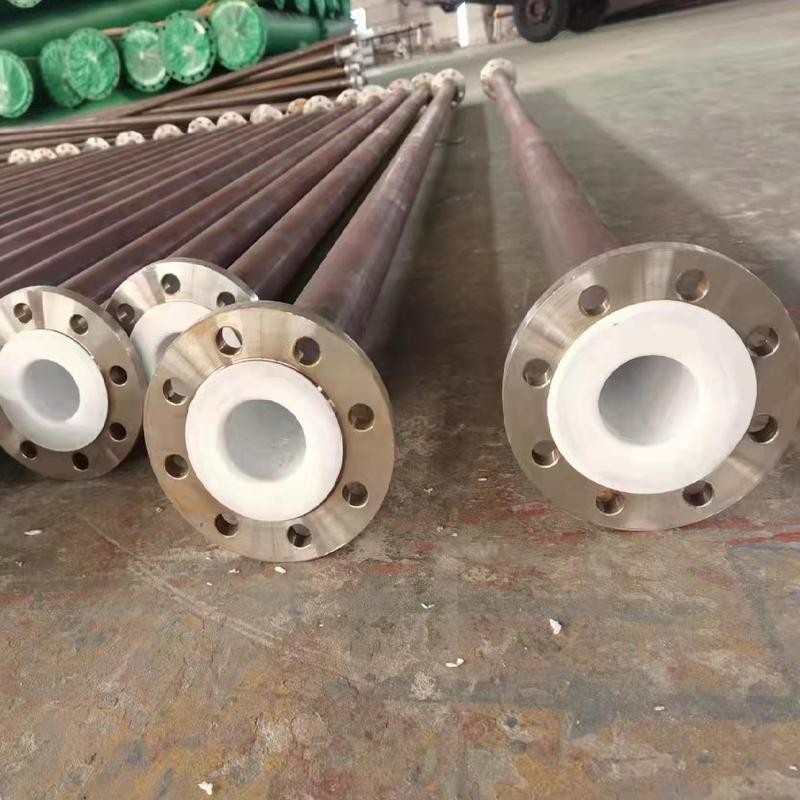
The market for wear-resistant ceramic pipes continues to evolve, with ongoing advancements in materials and manufacturing techniques. Several trends are shaping the future of this industry.
Research and development efforts are focused on creating new ceramic materials that offer enhanced wear resistance, toughness, and temperature tolerance. Innovations in composite materials and nanotechnology may lead to the development of next-generation ceramic pipes that outperform traditional options.
The increasing demand for customized solutions is prompting manufacturers to offer tailored wear-resistant ceramic pipes. This trend allows industries to select specific materials and designs that meet their unique operational requirements, enhancing overall efficiency.
As industries strive to adopt more sustainable practices, the development of eco-friendly ceramic materials and manufacturing processes is gaining traction. This focus on sustainability may lead to the introduction of more environmentally friendly options in the market.
With the rise of smart technologies, the integration of sensors and monitoring systems into wear-resistant ceramic pipes is becoming more common. These systems can provide real-time data on performance, wear levels, and operational conditions, allowing for proactive maintenance and improved efficiency.
The versatility of wear-resistant ceramic pipes is leading to their adoption in new industries and applications. As industries continue to explore innovative solutions, the demand for these specialized pipes is likely to grow, further expanding their reach.
Wear-resistant ceramic pipes are an indispensable component of modern industrial systems, providing robust protection against wear and enhancing operational efficiency. Understanding the various types, materials, and applications of these pipes is crucial for making informed decisions in selecting the appropriate solution for specific operational needs.
By considering factors such as operating conditions, wear resistance requirements, and cost implications, industries can choose the most suitable wear-resistant ceramic pipes to maximize performance and longevity. As technology advances and the market evolves, the future of wear-resistant ceramic pipes promises to bring even greater innovations and efficiencies, solidifying their role in diverse industrial applications.

Submit your demand,
we will contact you ASAP.

Sanxin New Materials Co., Ltd. focus on producing and selling ceramic beads and parts such as grinding media, blasting beads, bearing ball, structure part, ceramic wear-resistant liners, Nanoparticles Nano Powder

